
In the latest chapter of a brilliant series recalling his personal favorites, Jay Hovdey remembers the ill-tempered west coast filly who was on the verge of greatness when her career was cruelly cut short
There is no accounting for the Thoroughbred personality. It comes in all shapes and sizes. A journey through the literature of the sport will find horses described as puppy dogs and dragons, teddy bears and beasts.
Fusaichi Pegasus spent more time up on his back legs than all fours as he approached his Kentucky Derby triumph. Sunday Silence was such a notorious scamp around the barn that his nickname was ‘Sunday Stop It’. Cigar was wary at the approach of adults, but he would nuzzle small children with curiosity.
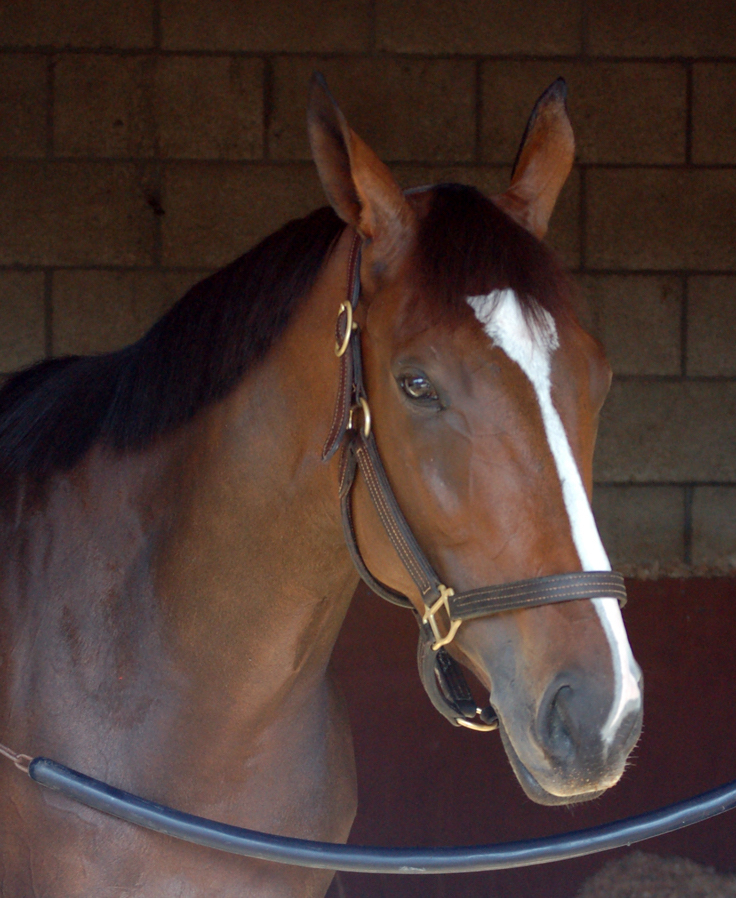 Nashoba’s Key, a foal of 2003, was one of the best females at work in North America during the first decade of this century. She won eight of 10 races, defeated a host of top fillies and mares, and was on the verge of mature greatness when her career – and her life – came to an abrupt end because she could not control the demons that afflicted her inner world.
Nashoba’s Key, a foal of 2003, was one of the best females at work in North America during the first decade of this century. She won eight of 10 races, defeated a host of top fillies and mares, and was on the verge of mature greatness when her career – and her life – came to an abrupt end because she could not control the demons that afflicted her inner world.
For 14 memorable months she was a performer of exquisite consistency, entertaining herself by dominating others both on the racetrack and around the barn. In the language of the Native American Choctaw nation, ‘nashoba’ means ‘wolf’. And in this case, the name fit the named like a glove.
Nashoba’s Key was by Silver Hawk, a son of 1972 Epsom Derby winner Roberto, out of Gris Vitesse, who beat colts in the 1969 running of the Prix Jacques le Marois.
Silver Hawk was a light, long-winded stayer who was twice placed in European Classics and went on to an admirable stallion career represented by such major stakes winners as Benny The Dip, Silver Ending, Hawkster, Memories Of Silver, Wonder Again and Red Bishop among his 21 crops. Nashoba’s Key was from his next-to-last batch.
Nature or nurture?
Why was Nashoba’s Key such a handful? Was it nurture, or nature? She was raised at Harris Farms in Central California, and plenty of even-tempered racehorses have emerged from that nursery through the years, including California Chrome. As for nature, there is something to be said for the sins of the father being visited upon the sons and daughters. In this case, the father was named Amerigo, the sire of Gris Vitesse.
Amerigo was an Irish foal of 1955, bred by Lord Howard de Walden. Born John Osmael Scott-Ellis, his lordship was serving his first term as senior steward of the Jockey Club in 1957 when the two-year-old Amerigo was turned over to trainer Jack Waugh in Newmarket. Hopes were high for the son of Nearco, and he was treated accordingly. Amerigo responded by winning the 1957 Coventry Stakes by eight lengths at Royal Ascot, certainly an early indicator of serious ability.
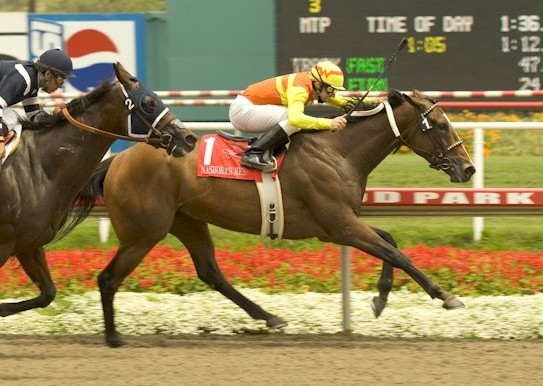 Unfortunately, Amerigo’s racing class did not translate to an admirable personality. During his brief British career, he earned the notorious Timeform ‘double squiggle’, reserved for those miscreants the much respected organisation labelled as “an arrant rogue; a thief; a horse so temperamentally unsatisfactory as to be practically worthless for racing purposes”. Amerigo also was a drop-dead gorgeous chestnut – Paul Newman by way of Jack the Ripper – so he often was given the benefit of the doubt.
Unfortunately, Amerigo’s racing class did not translate to an admirable personality. During his brief British career, he earned the notorious Timeform ‘double squiggle’, reserved for those miscreants the much respected organisation labelled as “an arrant rogue; a thief; a horse so temperamentally unsatisfactory as to be practically worthless for racing purposes”. Amerigo also was a drop-dead gorgeous chestnut – Paul Newman by way of Jack the Ripper – so he often was given the benefit of the doubt.
However, by the end of the year Amerigo and his baggage were packed off to the US. He was purchased by Mr and Mrs Tilyou Christopher, veterans of the business, and handed to their private trainer, Harris Brown. This did nothing to change the colt’s demeanor, but Brown eventually came to terms with the colt. His strategy?
“I don’t train him,” the trainer said. “I run him.”
More than 40 times in fact, over three seasons, during which Amerigo won a dozen races for his new owners and placed in some 20 more. He set course records on turf and dirt, won from 5½ to 14 furlongs, and made headlines by just showing up at Belmont, Santa Anita or Hialeah, usually because it took four men to saddle him and a first-aid team standing by.
‘He’s not mean … he just plays rough’
A wire photo of the era displayed Amerigo saddled in the Gulfstream Park paddock, up on his hind legs and pawing at the clouds. Once, after Amerigo savaged a groom, Christopher took pains to defend his horse.
“He’s not mean,” the owner told turf writer Russ Harris. “If he were mean, he would have bitten the groom’s hand off. He just plays rough. Very rough.”
At stud, Amerigo’s most famous offspring was Fort Marcy, the Hall of Famer and 1970 Horse of the Year. He also sired a collection of outstanding fillies, but Amerigo was a fire that burned hot and fast. He was dead at age 10 from – what else? – colic, leaving behind only five crops. Gris Vitesse was from his last.
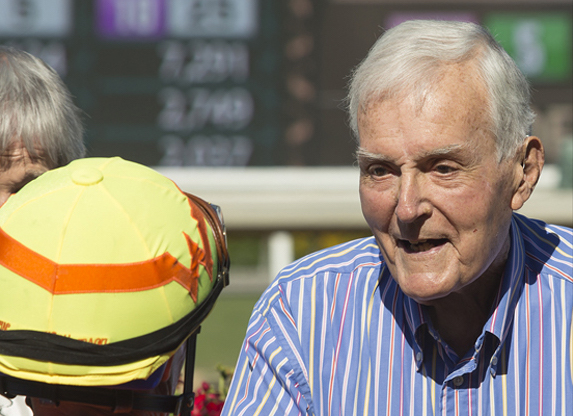 As for the female family of Nashoba’s Key, she was the first foal of her dam, Nashoba, an Irish mare out of Grise Mine, a daughter of Crystal Palace and the Busted mare Katy May. Grise Mine’s older half-sister was the explosive Kostroma, who ran wild in Southern California during 1991-92 to win everything that champion Flawlessly did not among mares on the grass. Kostroma was a daughter of 1986 Prix du Jockey Club winner Caerleon, and so, in hopes that the stars could be aligned once again, Grise Mine was sent to Caerleon as well.
As for the female family of Nashoba’s Key, she was the first foal of her dam, Nashoba, an Irish mare out of Grise Mine, a daughter of Crystal Palace and the Busted mare Katy May. Grise Mine’s older half-sister was the explosive Kostroma, who ran wild in Southern California during 1991-92 to win everything that champion Flawlessly did not among mares on the grass. Kostroma was a daughter of 1986 Prix du Jockey Club winner Caerleon, and so, in hopes that the stars could be aligned once again, Grise Mine was sent to Caerleon as well.
Former trainer Mark MacDonald, acting as agent, connected Carla Gaines and owner Warren Williamson with Nashoba and her trainer Tommy Stack, who also handled the young Kostroma. Alas, Nashoba was no Kostroma, but Gaines treated her like a good thing.
“She’d only had the one race, and watching the film I fell in love with her long stride,” Gaines said of Nashoba, who won a Santa Anita maiden race at first crack for her new people. After that, however, Gaines had to campaign Nashoba around soft tissue setbacks. Still, she managed to win three of her five US starts.
Then it was off to Kentucky, where she was bred to Silver Hawk and brought back to California to deliver her first foal. As Gaines will testify, it was not a pretty sight.
“I was mortified,” the trainer said, recalling her first reaction to the two-year-old Nashoba’s Key. “She looked like a little donkey. I’m not kidding. She was small, very slab-sided with not a lot of depth. And big, big ears. Obviously, she was going to take a long time to develop.”
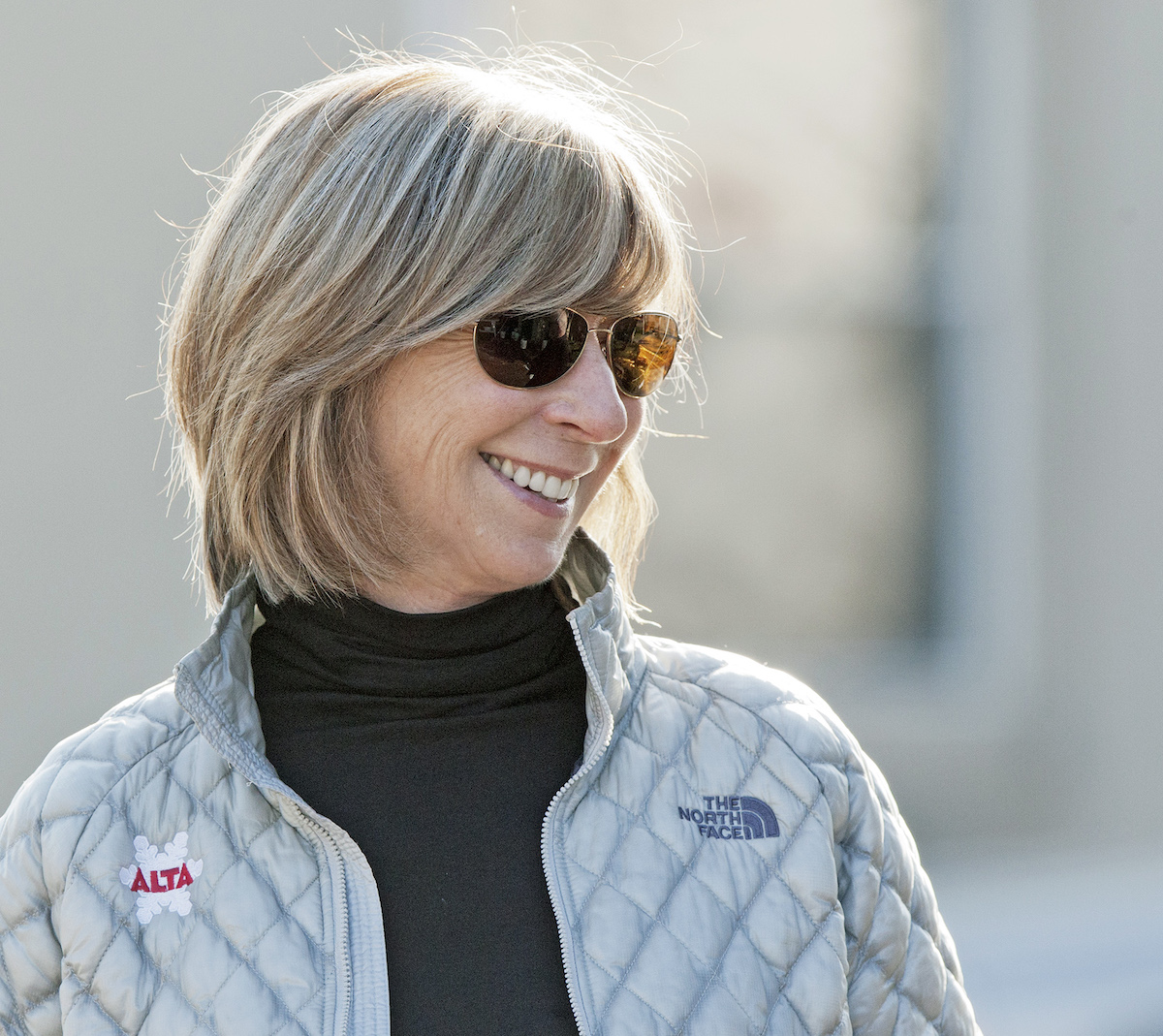 Gaines was no stranger to the challenges of youth. Before turning to Thoroughbreds, she worked as a counselor to troubled young people in her hometown of Birmingham, Alabama.
Gaines was no stranger to the challenges of youth. Before turning to Thoroughbreds, she worked as a counselor to troubled young people in her hometown of Birmingham, Alabama.
The job roiled her soul, so she moved on to study psychology and sociology with the intention of a different career path. But then she was diverted by friends to the racing world, and the die was cast. Gaines began training in earnest in the 1990s with a small stable in Northern California before success sent her to the circuit of Santa Anita, Hollywood Park and Del Mar.
By the time Nashoba’s Key entered the picture, Warren ‘Spud’ Williamson had been a patron of the Thoroughbred arts for more than 40 years. He was the grandson of Harry Chandler, founder of the Los Angeles Times, who made his own way as an executive in the oil industry and with a high-level investment firm before becoming chairman of the Chandler Family Trusts. Williamson, who died in 2018, was also a director of the Oak Tree Racing Association and Hollywood Park.
The kind of owner who really cared
“Spud was the kind of owner who really cared about his horses and let you do what was best for them,” Gaines said. “If you told him a horse needed 60 days, he’d say, ‘Give ’em 90.’”
Nashoba’s Key required every ounce of that patience. She did not make her first start until the age of four in January 2007. In deference to her soundness issues, Gaines kept the filly on the grass, eventually winning a small stakes for California-breds. By the spring of that year, the California tracks were transitioning to synthetic surfaces for their main ovals, a surface that gave Gaines more choices.
Joe Talamo was a 17-year-old apprentice on the day Gaines gave him a leg-up to ride Nashoba’s Key for the first time in the Milady Handicap at Hollywood Park. That was June 3, 1990.
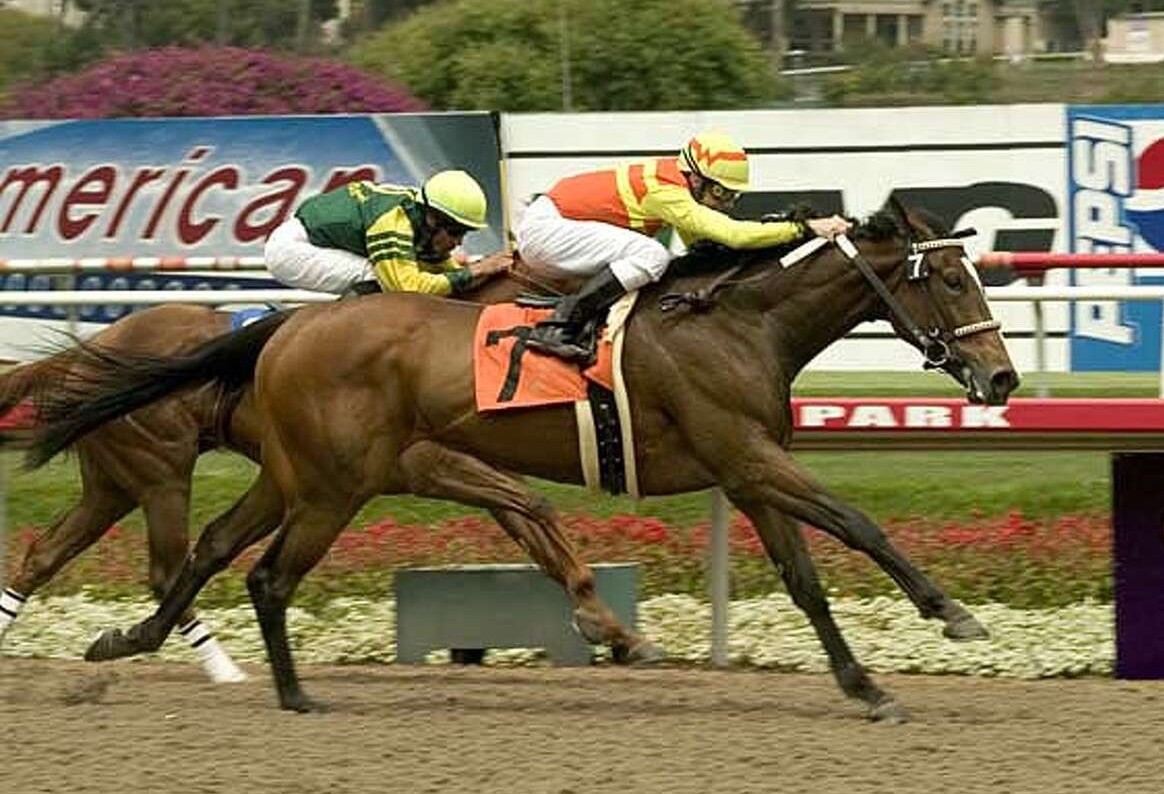 Garrett Gomez had ridden the filly to perfection in her first three races against lesser company, but he went to New York to pursue even more fame and fortune. Talamo, a Louisiana native, had been imported to California by Bobby Frankel and was winning races by the bushel against the likes of Mike Smith, Kent Desormeaux, and Corey Nakatani.
Garrett Gomez had ridden the filly to perfection in her first three races against lesser company, but he went to New York to pursue even more fame and fortune. Talamo, a Louisiana native, had been imported to California by Bobby Frankel and was winning races by the bushel against the likes of Mike Smith, Kent Desormeaux, and Corey Nakatani.
“I didn’t feel like I was going out on a limb putting Joe on her,” Gaines said. “He worked her and got along with her well. And remember, at that point we really weren’t sure what kind of horse she’d be.”
To this day, Talamo marks his association with Nashoba’s Key as a watershed moment in his career, which has reached nearly 2,300 winners and more than $126 million in prize-money earnings. He is currently competing at Oaklawn Park, where the powerful Brad Cox stable is among his patrons.
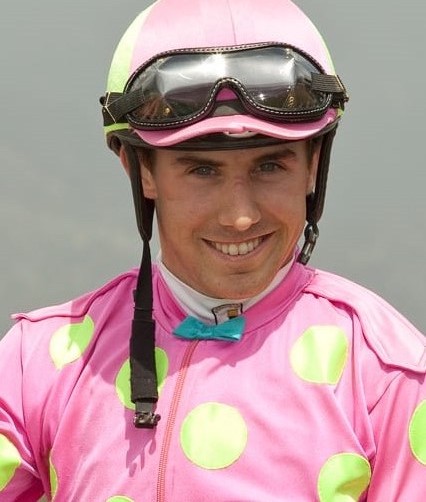 “I’d done well for Carla to that point,” Talamo said recently. “But for her to put me on Nashoba’s Key was a huge opportunity. She gave me my first Grade 1 race in the Vanity that summer at Hollywood Park. I know Hollywood’s not around anymore, but the history of that race alone makes it special.”
“I’d done well for Carla to that point,” Talamo said recently. “But for her to put me on Nashoba’s Key was a huge opportunity. She gave me my first Grade 1 race in the Vanity that summer at Hollywood Park. I know Hollywood’s not around anymore, but the history of that race alone makes it special.”
In the mile-and-a-sixteenth Milady, Nashoba’s Key and Talamo defeated Hystericalady, already a two-time G1 winner, and Balance, a winner of three G1 races fresh from victory in the Santa Margarita Invitational.
‘You’ve got to see it to believe it’
Both fillies tried Nashoba’s Key again in the mile-and-an-eighth Vanity, and the result was the same, then it was on to Del Mar for the Clement L. Hirsch Handicap, back at a mile and a sixteenth.
“You’ve got to see that race to believe it,” Gaines recalled, her voice still filled with wonder. “You wouldn’t believe how much she went through in a four-horse field.”
The trainer was not exaggerating. Gaines and Williamson watched helplessly from the stands as Nashoba’s Key and Talamo were herded wide by Victor Espinoza and Balance before darting inward to escape, only to find themselves boxed in behind front-runners River Savage and Bai And Bai, with Balance to the outside.
“She was so mad that she reached over and tried to savage Balance or bite Espinoza on the leg,” Gaines recalled. “When a hole finally opened up she shot through so fast you could hardly believe it and won going away.”
To that point Nashoba’s Key was unbeaten in seven starts – four over synthetic surfaces and three on the Santa Anita grass. Race number eight would be back on the Santa Anita turf in the Yellow Ribbon at a mile and a quarter, and you would think a filly with such a sterling record would be favored. She was not.
“Bobby Frankel guaranteed he’d beat us with his filly Citronnade,” Talamo said. “And she was a monster.”
Citronnade, a daughter of Lemon Drop Kid, had run roughshod over the female turf division in California that year to win four major stakes, including the G1 Gamely Handicap.
She was odds-on in the Yellow Ribbon, rendering Nashoba’s Key the 17-10 second choice, and the race was going to Citronnade’s typical strength on the front end through modest fractions – until Nashoba’s Key came and got her to win by three-quarters of a length. Black Mamba, winner of the John C. Mabee Handicap the month before, finished a close third.
It was therefore no surprise to find Nashoba’s Key carrying the hopes of the domestic side into the 2007 Breeders’ Cup Filly & Mare Turf at Monmouth Park on Oct. 27, starting a close second choice to Passage Of Time, who appeared primed for her best effort by Henry Cecil. However, there was only one conclusive winner at that Breeders’ Cup: Mother Nature.
Monmouth mudbath
A late autumn storm turned Monmouth’s Cup into an equine regatta. The Oct. 26 program was played on a main track awash in standing water, with visibility limited by driving rain. The next morning, Gaines pulled on a pair of mud boots and walked the turf course, dreading every step.
“Along the inside, I was sinking in, and I only weighed about 120 pounds,” Gaines said. “It was a little better to the outside, so I told Joe that whatever he did he should stay off the rail. If he was wide all the way and got beat, I would not hold it against him.”
As it turned out, Talamo and his filly spent most of the mile and three-eighths hopelessly pinned inside the large, roiling field. By the time they found decent footing in the clear, Lahudood was on her way to victory over the wide-running Honey Ryder, with Passage Of Time going along steadily for third. Fourth-placed Nashoba’s Key was beaten two lengths, accompanied by the official race chart comment, “Bottled up on rail.”
The Breeders’ Cup loss likely cost Nashoba’s Key a championship, but Gaines was just happy to have her back in one piece. The final time for the Filly & Mare Turf was 2m22.75s, more than 50 lengths slower than the course record.
In the Breeders’ Cup Turf, the European superstar Dylan Thomas finished back in the pack, while his stablemate, George Washington, suffered fatal injuries running on the main track in the Classic.
“I seriously considered scratching her,” Gaines said. “It was a hard decision.”
Nashoba’s Key wintered well and returned to the races on Jan. 26, 2008, as a five-year-old in an event for California-breds billed as the $500,000 Sunshine Millions Filly & Mare Turf. At nine furlongs on her home field, Nashoba’s Key seemed to be a lock, but no one told Bill Mott and his stray Cal-bred, Quite A Bride. Under Gomez, Quite A Bride was always ahead of Nashoba’s Key, then finished with a smart final furlong to win by more than a length.
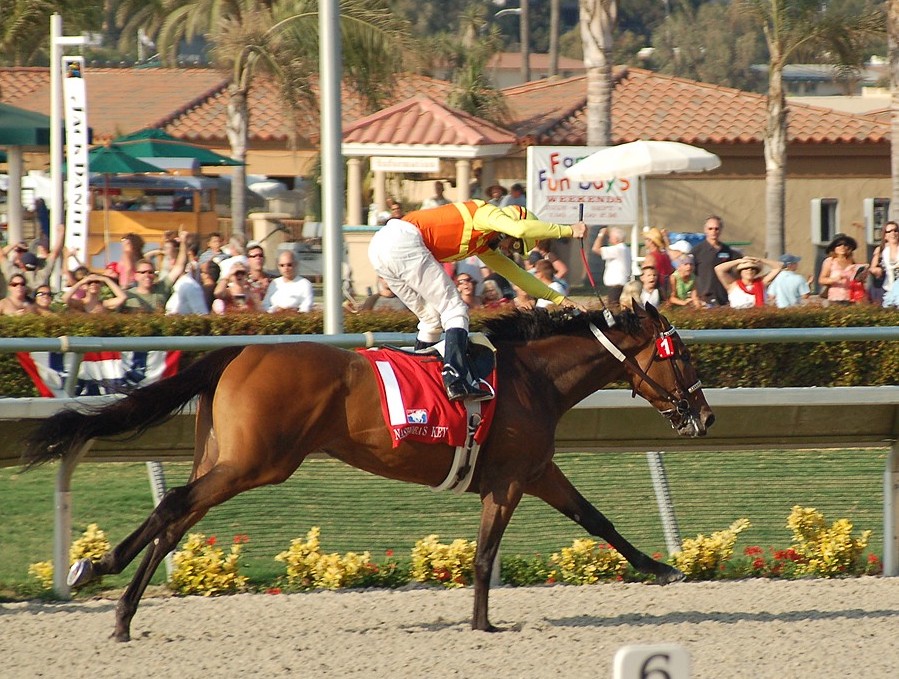 Just five days earlier, Talamo had stood on the stage at the Beverly Hills Hotel in Beverly Hills accepting the Eclipse Award as the outstanding apprentice jockey of 2007 – but that did not prevent the newly-turned 18-year-old from losing the mount on Nashoba’s Key. When she reappeared in the Santa Margarita Invitational on March 9, Gomez was back in the saddle. They won by 4½ lengths in a gallop, with La Canada Stakes winner Dawn After Dawn trailing in second.
Just five days earlier, Talamo had stood on the stage at the Beverly Hills Hotel in Beverly Hills accepting the Eclipse Award as the outstanding apprentice jockey of 2007 – but that did not prevent the newly-turned 18-year-old from losing the mount on Nashoba’s Key. When she reappeared in the Santa Margarita Invitational on March 9, Gomez was back in the saddle. They won by 4½ lengths in a gallop, with La Canada Stakes winner Dawn After Dawn trailing in second.
“I was disappointed, sure,” Talamo said. “But how could I be anything but grateful as well? They took a chance putting me on her, and as it turned out I think she could have won those races with anybody.”
Impressive as it was, the 2008 Santa Margarita remains the race that might have been. Among the scratches from the field was the rising four-year-old star Zenyatta, who had won her first three races with a dramatic flair that already was attracting fans far and wide. Zenyatta went on to win 19 of 20 starts and everlasting acclaim, while the Nashoba’s Key story took a much darker turn.
“I wanted to give her a little break after the Santa Margarita to have her fresh for the last part of the year,” Gaines said. “I was determined she could win the Breeders’ Cup race that fall, especially since it would be at Santa Anita. But because she could be so difficult, I kept her at the track where we could just tack-walk and watch her before going on with her again.”
‘When she kicked, she was serious’
Nashoba’s Key lived in a roomy pen tucked along the outside wall of the cinderblock barn that housed the overflow of Gaines horses at Hollywood Park. The pen gate was set so the mare could lean her head out for access to a feed bin. But the accommodation came with a warning.
“We had to put a traffic cone in front to keep people from walking by,” Gaines said. “She’d lay back and lunge at you like a viper if you got too close.”
On the morning of Wednesday, May 28, before the sun had crested the low hills to the east of the Hollywood stables, veterinarian Chuck Jenkins received an emergency call to head for the Gaines barn in a hurry. There, in the dark, Nashoba’s Key was standing on three legs, the left hind twisted and dangling.
“I could see that the skin over the inside of the hock was torn open, and the leg was rotated out,” Jenkins said later that morning. “I could see bones, and I knew when I saw open skin that she had no chance.”
Jenkins immediately sought a second opinion from a colleague, whose verdict was the same. Nashoba’s Key was mercifully euthanized in the face of an injury most likely caused by lashing out at the side of the pen.
“When she kicked,” Gaines said, “she was serious.”
Gaines was with her horses at Santa Anita when she got the call. She had just returned to California from a week with her family in Alabama, where her brother, Martin Gaines, had died unexpectedly at age 58. More than 14 years later, when that fateful week is raised Gaines needs a moment to sift through her thoughts.
“When I returned, all I wanted to do was see Nashoba,” Gaines said. “She was my love. I needed the distraction.”
There was a pause.
“It was the first morning back after my brother’s funeral,” Gaines continued. “I wanted to finish training my horses at Santa Anita and then go see her, just to pick up my spirits. It was all about me, I guess.”
And then it was about her. It cannot be denied that Nashoba’s Key deserved a better fate, but the Thoroughbred blood boils at different temperatures, and often they are their own worst enemies, no matter what their people do to calm the demons.
Nashoba had eight more foals after giving birth to Nashoba’s Key. The best of them by far was Nashoba’s Gold, a daughter of Smart Strike, who won a pair of graded stakes as a three-year-old in 2014. Bred to Kitten’s Joy, in 2019 Nashoba’s Gold foaled the colt now named Nashoba’s Joy, owned by the Williamson family and trained initially in Kentucky by William Morey.
In his first start, on Sept. 3, 2022, Nashoba’s Joy was narrowly beaten in a $150,000 maiden at Kentucky Downs. He failed to hit the board in three subsequent starts on dirt and synthetics, so it was determined that his future was on grass this winter in California. With Carla Gaines.
“He’s got some growing up to do,” Gaines said. “It’s just a family that develops later. Watching him on the grass at Kentucky Downs, I liked the way he was striding out the day he almost won. Just having something that goes back to Nashoba’s Key is very comforting.
“But he doesn’t have big ears,” Gaines added. “And he’s really sweet.”
• Read all Jay Hovdey's features in his Favorite Racehorses series
‘He likes to be the boss’ – Lava Man enjoys his retirement at Old Friends
View the latest TRC Global Rankings for horses / jockeys / trainers / sires


